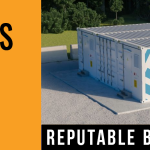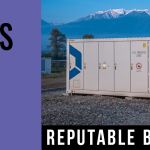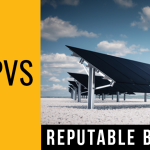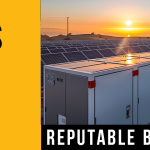 Australia is to trial using solar and wind power to produce hydrogen via electrolysis, with the hydrogen then being used for long-term energy storage in the Sydney gas network.
Australia is to trial using solar and wind power to produce hydrogen via electrolysis, with the hydrogen then being used for long-term energy storage in the Sydney gas network.
The Australian Renewable Energy Agency (ARENA) has committed AU$7.5 million (US$5.3 million) in funding for Australian energy firm Jemena to build a demonstration scale 500kW electrolyser, known as Project H2GO, at its facility in western Sydney.
The AU$15 million, two-year trial project will connect to Jemena’s existing gas network, which delivers gas to 1.3 million customers in New South Wales. In a release, ARENA noted that hydrogen can be safely added to the natural gas mains at concentrations of up to 10% without affecting pipelines, appliances or regulations.
Most of the hydrogen produced will be injected into the local gas network for domestic use and will go towards demonstrating the potential for renewable hydrogen storage in Australia’s gas networks.
Jemena MD Frank Tudor said: “In the future Australians will need to decide what to do with excess renewable energy on very windy or very sunny days. Jemena’s Project H2GO will demonstrate how existing gas pipeline technology can store excess renewable energy for weeks and months, making it more efficient than batteries which can only store excess renewable energy for minutes or hours.”
Some of the hydrogen will be used in a gas engine generator for electricity generation back into the grid with the remaining stored for use in an onsite Hydrogen Refuelling Station for hydrogen fuel cell vehicles.
ARENA CEO Darren Miller said: “As Australia transitions to renewable energy, hydrogen could play an important role as energy storage and also has the effect of decarbonising the gas network with ‘green’ gas. There is significant potential in the power-to-gas value chain including the ability to stabilise the grid as well as pairing renewable energy with electrolysers to soak up and store surplus electricity.”
In the longer term, hydrogen also has the potential to be a major Australian export opportunity. Earlier this month, ARENA announced AU$22 million in R&D funding into exporting hydrogen, supporting 16 research projects across nine Australian universities and research organisations, as hydrogen is seen as potentially a major export opportunity.
read more
 All over California, school districts are beginning to install energy storage. Mountain View Los Altos (MVLA) High School District was the first district in the state to combine energy storage with solar power generation and electric vehicle (EV) charging stations. At ENGIE Storage, we have years of experience helping K-12 school districts generate cost savings and improve the economics of sustainability measures with our GridSynergy® energy storage systems and software platform. We recently sat down with Mike Mathiesen, associate superintendent of business services at MVLA, to talk about how school districts can benefit from energy storage.
All over California, school districts are beginning to install energy storage. Mountain View Los Altos (MVLA) High School District was the first district in the state to combine energy storage with solar power generation and electric vehicle (EV) charging stations. At ENGIE Storage, we have years of experience helping K-12 school districts generate cost savings and improve the economics of sustainability measures with our GridSynergy® energy storage systems and software platform. We recently sat down with Mike Mathiesen, associate superintendent of business services at MVLA, to talk about how school districts can benefit from energy storage. It’s likely a strong indication of the way the world is adopting renewable energy rapidly that just under a month ago, one of the best-established trade shows for solar in the US featured what seemed like almost as much space dedicated to national and international energy storage companies and technologies, as it did for solar.
It’s likely a strong indication of the way the world is adopting renewable energy rapidly that just under a month ago, one of the best-established trade shows for solar in the US featured what seemed like almost as much space dedicated to national and international energy storage companies and technologies, as it did for solar. California recently joined other leading states, provinces, cities, and corporations around the world by setting an ambitious 100 percent carbon-free electricity target
California recently joined other leading states, provinces, cities, and corporations around the world by setting an ambitious 100 percent carbon-free electricity target October 18 (Renewables Now) – In a drive to reduce its energy costs, the San Diego Zoo has awarded EDF Renewables North America Distributed Solutions an energy storage services contract supported by a 1 MW/4 MWh battery.
October 18 (Renewables Now) – In a drive to reduce its energy costs, the San Diego Zoo has awarded EDF Renewables North America Distributed Solutions an energy storage services contract supported by a 1 MW/4 MWh battery. Sometime in the next month or two, the first investment in what will be a significant new stage in the transition to a renewable energy dominated grid in Australia will be made.
Sometime in the next month or two, the first investment in what will be a significant new stage in the transition to a renewable energy dominated grid in Australia will be made. Everyone agrees that Federal Energy Regulatory Commission Order 841, and its commandment to create participation models for energy storage across the country, is going to be a big deal.
Everyone agrees that Federal Energy Regulatory Commission Order 841, and its commandment to create participation models for energy storage across the country, is going to be a big deal. Southern California Edison has selected esVolta to develop, build and operate four energy storage projects totaling 38.5 MWh in Riverside and Ventura counties, the companies reported.
Southern California Edison has selected esVolta to develop, build and operate four energy storage projects totaling 38.5 MWh in Riverside and Ventura counties, the companies reported. The cost of energy storage has fallen to the point where the power generation industry is moving from demonstration projects to full deployment. Driven by demand and a federal order designed to nurture broader adoption of storage capabilities, practical applications of energy storage are emerging that are competitive with conventional solutions.
The cost of energy storage has fallen to the point where the power generation industry is moving from demonstration projects to full deployment. Driven by demand and a federal order designed to nurture broader adoption of storage capabilities, practical applications of energy storage are emerging that are competitive with conventional solutions.



